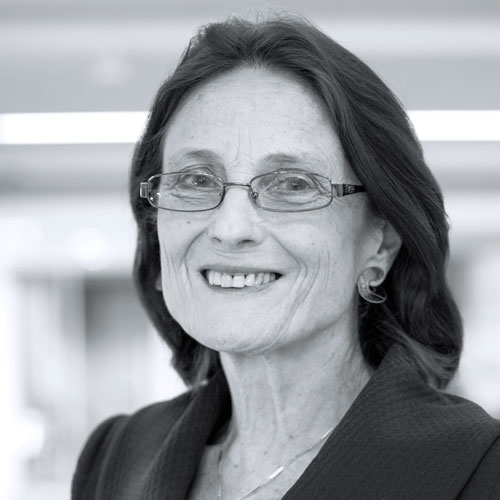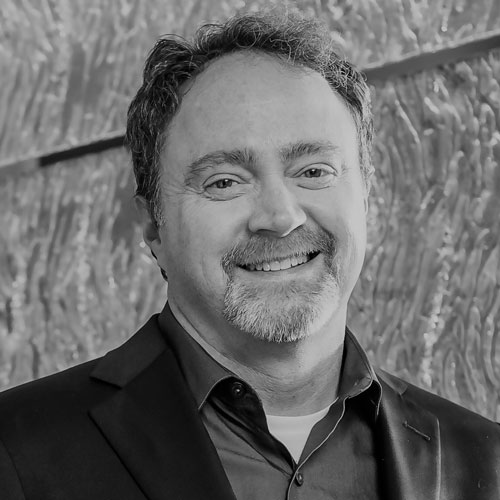Like many leaders, Christine Aucreman found inspiration for her leadership philosophy through a combination of life experiences, observation, and a passion for reading. Her professional journey has provided numerous opportunities to stretch her perception of what’s possible as she’s consistently worked to overcome one hurdle after another.
Aucreman first entered the healthcare arena ten years into her career, after four years in public accounting and six years in the corporate office of an international, publicly traded manufacturing firm. Her debut into healthcare was as a director of internal audit for a health system that was in a difficult market. A few months after Aucreman joined, the board hired a turnaround firm to help the system return to profitability. Because of her previous experience, Aucreman was tapped to work with the consulting firm to measure, validate, and communicate the cost-saving efforts.

Within a year of this assignment, Aucreman became the finance leader for one of the hospitals in this system. This was a pivotal moment in her career, she says. Her fluency in the language of business had made her stand out, but she was still learning the acronym-dense language of healthcare. “I’ll never forget it: I was told on a Friday that they would like me to report to administration on Monday,” she says. “I knew right then if I was going to assume this responsibility, I would have to study, build relationships, and connect with subject matter experts to help get me ramped up quickly.”
Aucreman’s team included experienced subject matter experts, most of whom were more tenured than she was within the healthcare field. She was tasked with the dual challenge of gaining her team’s trust while learning from their expertise. To establish herself as both a learner and a leader, she studied and earned her Certified Healthcare Financial Professional (CHFP) designation from the Healthcare Financial Management Association within a year of taking the position, and she quickly demonstrated that she would use these new skills to advocate for her team.
“Had I approached that role from a point of insecurity, where I felt as though I needed to pretend that I was an expert in a particular area or to fake my way through it, I would have been dead in the water,” she says. “Sometimes you have to be comfortable saying, ‘Okay, educate me. Help me learn everything I can about your subject area.’”
Her efforts paid off. Despite a drop in high-acuity patient volume, her team dramatically increased net revenue thanks to its work within revenue cycle, predominantly around denial prevention, clinical documentation, point-of-service collections, and Medicaid conversions. Although she had no experience in revenue cycle when she took the position, and acknowledged this was the part of the role she most feared, within two years she was appointed senior vice president of revenue cycle and financial operations for the system because of her success in this arena.
Aucreman’s greatest weakness became one of her greatest strengths, propelling her to later go on to serve as a chief revenue cycle officer for another health system before ultimately joining Mount Carmel Health System as the vice president, financial planning and operations. When she first joined the Ohio-based health system, her focus was predominately tactical; one of her first tasks was assembling a strong team. “I had to focus an enormous amount of energy on recruitment during the first few years,” she says. Crediting insight gained earlier in her career, she knew it was imperative to get the right people on the right seat of the bus and that the key to this approach was not only recruiting employees who have the right skill, capacity, and drive to learn what they don’t know, but also demonstrating the same.
Once she has the right people in the right positions, Aucreman believes it’s equally important to create an organizational structure that supports them, while also assessing technology needs and enhancing workflow. Using the Tableau overlay software, her team has created business intelligence tools that allow finance and operations leaders to more easily isolate and analyze data. With the length-of-stay dashboard, for example, leaders can identify opportunities to reduce the length of stay for Mount Carmel’s patients by comparing actual length of stay to the Medicare geometric mean and note variances. To date, her team has created several drillable dashboards that are accessed and used by leaders ranging from front-line managers to the CEO of the system.
“These tools allow us to provide our leaders with business intelligence that equips them to quickly analyze information and in turn make better, more informed decisions aimed at driving operating results,” Aucreman says. With the right talent, structure, and tools, her team was able to make substantial improvements in the value of information provided to the operating leaders, improve customer service, and significantly increase colleague engagement, while at the same time reducing labor cost.
Now that Aucreman has a strong foundation in place at Mount Carmel, she has shifted her focus to strategy, leadership development, and succession planning. In October 2017, her leadership team completed a facilitated leadership strategy deployment exercise where they created specific breakthrough goals, organized priorities, and ultimately created a vision statement for their team.
Aucreman oversaw this process, but this time she let them drive the bus. Meanwhile, she developed her own personal “where do we go from here” vision, which consists of five key challenges: focus on the details, they matter; begin each day with a beginner’s mind; embrace above-the-line behavior; open the door to discomfort; and give relentless effort every day.
For five weeks, her team reflected on these challenges, sharing their personal strategies to embrace these behaviors with the group. “It was incredible. Every single one of them contributed to this exercise,” Aucreman says. “It has been really cool to see what happens when I am willing to be vulnerable, share my story, equip them with a framework, and then step aside.”
Photo courtesy of Mount Carmel Health System

